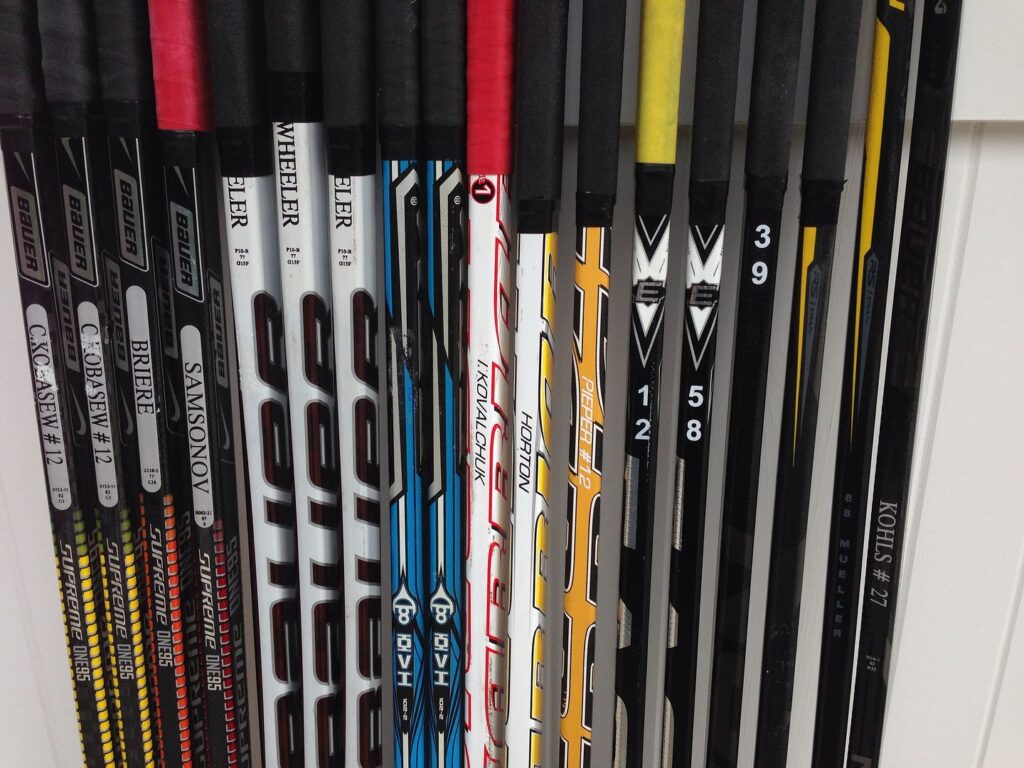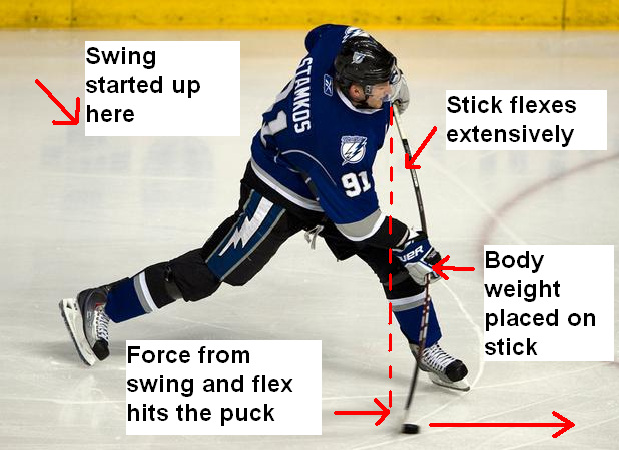

We’ve all been there – the sports store stick area, looking at a mountain of $300+ dollar sticks going ‘I’m overwhelmed’. Well, here are some tips on how to reduce the clutter and stay on budget this coming season. This question was also a text that I received yesterday from a parent who will remain name-less, so it got my metaphorical wheels spinning for this article.
A few disclaimers before you read on. These tips are merely suggestions. I am in no way encouraging people to get rid of their such and such a brand to switch to another brand. There is very little difference in weight/quality/performance of a top-of-the-line CCM, Bauer or True stick. Another disclaimer is if you love the sticks that you have, they work for you, you’re in the right place mentally and you trust your game with that stick in your hand, don’t read below and think ‘oh I have to switch’.
Tip #1 – Avoid the Gimmicks. A hole in the stick blade? A triangular-shaped shaft? A stick that’s ‘scientifically proven’ to score more goals? Umm… my suggestion here would be to see through the marketing and save your hard-earned money. Put it this way – if there was some magic technology that made the stick THAT much better, don’t you think every NHL player that isn’t sponsored by one of the major brands would be using that stick?
Tip #2 – Go with one model down from the top model, or buy last years model in bulk during clearance season. The difference between the CCM AS4 Super Tacks and the AS3 is mostly look and maybe a little bit of weight that is so irrelevant. To test my theory, I used the AS3 at 6 am yesterday and the AS4 at 7 am. The AS4 felt marginally lighter but may have been a placebo because I went into the experiment thinking it would be a little lighter. If you can load up on the ‘last years model’ in the Spring of any year (before the new models come out), they will likely be on sale. If you can’t time that sale, buy the stick model that is about a year old. For example, CCM’s Ribcore line just received a facelift so that stick will be the highest price. Instead, go buy the Tacks line and if you click here, you’ll notice that it’s much cheaper than when it first came out. You’re welcome. Side note – Sportscraft on Ropewalk Lane is great to its customers; article on that store here .
Tip #3 – Focus on Curve, Lie and Stiffness. Every brand – no matter what ‘stick family’ – usually has the same 4-5 ‘patterns’. These patters don’t change from stick family to stick family – for example, the P28 pattern in CCM is the same in the Tacks line as it is the Ribcore line. I don’t think there’s one curve (heel curve or mid curve; heel curves start to curve at the heel, mid curves start to curve at the centre of the stick blade) or toe (square vs rounded) that’s better or worse than the other – my recommendation here is that both of your sticks have a consistent curve/toe shape. If you have 2 sticks, have 2 CCM P28 curves if at all possible. If you break one, the other one looks and feels exactly the same to you. Even if you have a Bauer Supreme (expensive version) and your back-up is a Bauer Supreme (cheaper version), that is cool. My suggestion would be that they have a consistent curve and toe shape.
Stick lie is something most people pay very little attention to, but it is more important than given credit for. Here’s a good video explaining lie. Lie is usually not written on the stick, so it’s best to ask one of the staff members which lie is which or do some at-home research. After all, we do live in the information age. Here’s a great web site that breaks all this down for you, and gives you an idea of comparable curves, lies etc across the major brands .
Stiffness – on the other hand – is usually written on the stick shaft portion. Sticks come in a range of stiffness ratings – 65 being very whippy (usually seen in intermediate and junior sticks because the players aren’t as physically strong), all the way to 95 (stiff) and in some cases 105 (like a board for someone who’s not 6’5 250). Personally, I use an 85 but a lot of people who love to fire the puck prefer the whippier options. That ‘whip’ creates torque, which helps propel the puck forward. See below. SIDE NOTE ON STIFFNESS – if you buy a stick, the stick stiffness is for the factory size of the stick. If you make alterations to the stick (cut it, add an extension to it), you essentially change the flex of the stick (cutting it makes it more stiff, stick extensions make the stick more whippy). The rule of thumb here is every inch you add/subtract = 3 points of stiffness to/from a stick.


In closing, no matter what stick(s) you choose, equipment doesn’t make a hockey player. You can have the best gear imaginable, but without proper technique, you will not get the maximum benefits. My dad always said to me ‘son, if you can play, you’ll be able to play with anything’ and that came with actions, too. I didn’t have a top-of-the-line stick or pair of skates until I was 16 years old. Keep working on your game and techniques; good things will likely follow.
Until Next Time
AP
Related Articles
Article on Sportscraft – https://vhghockey.ca/sportscraft-source-for-sports-an-important-piece-of-nl-sports-history/
Weighing in on the 2024 NL Female class being possibly the greatest in provincial history – https://vhghockey.ca/is-the-female-2024-recruiting-class-the-deepest-in-nl-history/
